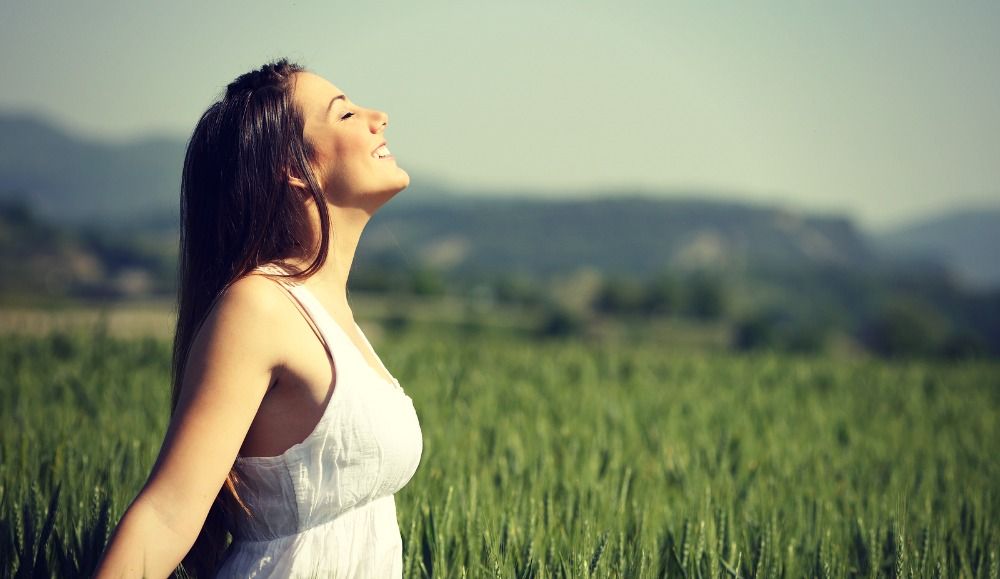What is Yoga & Why is it needed?
Yoga is a discipline that focuses on the connection between mind and body. It found its origin in ancient India as one of the six major schools of Hindu philosophy concentrating on physical, mental and spiritual disciplines. Yoga found its way to a wide range of traditions used in Hinduism, Buddhism, Jainism and Sikhism. But only in the late 19th century Hindu monks brought yoga to the West.
These days yoga is well known and practiced by many people. It became popular for its mental and physical exercises that bring our mind and body back to its natural balance. Yoga can help us to cope with our stressful lives.
What are Pranayama Breathing Exercises?
Pranayama means ‘breathing control’ or ‘breathing techniques’. This basic yoga breathing technique can help you to prepare for a meditation session. Your blood and brain will be enriched with oxygen and your vital life energy or prana will be increased. When we inhale, oxygen flows through our body giving our organs the vital energy they need. While we exhale carbon dioxide and other toxic wastes are leaving our body. Through breath control, we absorb the vital life force or prana that forms the link between body, mind, and spirit.
Re-energize your body through deep and systematic breathing or pranayama. Do the exercises and learn how to breathe properly, using the full capacity of your lungs.
In our busy, stressful lives we tend to ignore our breathing. Most people are only using a tiny part of their lungs. They breathe fast and shallow. This results in less oxygen flowing through your body and may lead to a wide range of complications such as insomnia, heart diseases, and fatigue. Negative energy will cause an imbalance between our mind and body and can be the cause of a restless and troubled mind that induces stress.
Complete breathing used for yoga and meditation is a combination of 3 sorts of breathing: collarbone, rib and abdominal breathing. You can practice all those kinds of breathing when standing, seated or when you lie down. Choose the most comfortable position.
ALSO READ: Meditation, Healing Yourself!
4 Yoga Breathing Exercises
#1 Clavicular, collarbone or high breathing technique
This type of breathing involves raising upper ribs, collarbone, and shoulders. Inhale slowly through your nose while pulling your shoulders and collarbone upwards. Moreover, this will fill the upper part of your lungs with air. Lower your shoulders slowly and push the air out through your nose. Now you will see that your tummy and midriff are not moving at all. High breathing is shallow and the air fails to reach the alveoli or lung vesicles for a successful gaseous exchange. It is a quite common breathing form, especially among women. Further, it is taught that women breath more shallow due to the fact that they often wear tight clothes which are preventing the
It is a quite common breathing form, especially among women. It is taught that women breath more shallow due to the fact that they often wear tight clothes which prevent deeper abdominal breathing. When only using this higher form of breathing digestive, stomach, constipation and gynecological problems may occur.
#2 Intercoastal, rib or middle breathing technique
This type of breathing involves expanding ribs and chest sideways. Inhale slowly through your nose, concentrate on expanding your ribs. Exhale through your nose again and concentrate on lowering your ribs.
During this type breathing, only the middle part of your lungs will fill up with air. Make sure your tummy and shoulders are not moving. This is also a shallow type of breathing and again there will be little gaseous exchange because the air doesn’t reach the alveoli.
Scroll down for more pranayama breathing exercises.

#3 Abdominal, diaphragmic or low breathing technique
This type is far more effective than high or middle breathing and takes place in the lower part of the lungs where gaseous exchanges take place. This type of breathing involves our abdomen to go in and out. Concentrate on your tummy. Inhale slowly through your nose, push your tummy forwards, this will lower your midriff or diaphragm.
Your lungs will fill with air. After the inhaling process your midriff will contract and push the air back out your lungs through your nose and your abdomen will go back to its original position. During abdominal breathing, only the lower part of our lungs is filled with air. Concentrate on the abdominal breathing, make sure only your tummy is moving when you breathe in and out. We often use this form of breathing when we are sleeping, but when we become physically active when tend to breathe more shallow.
This type of breathing is superior to high or middle breathing. The lower lobs of our lungs can contain more air and the air reaches the alveoli for gaseous exchange. The diaphragm makes a piston-like movement when expanding and acts as a second heart and sucks in more venous blood and improves our general circulation. Studies show that low breathing has a positive effect on our solar plexus. This is a very important nerve center in our body.
#4 Complete or yoga breathing
Complete breathing involves the entire respiratory system. It combines the high, middle and low breathing technique in one movement. It is the deepest breathing possible and expands the lungs to their fullest capacity. You’ll need some practice to master this complete breathing technique.
Practice all techniques separately before trying to combine them in one motion. You’ll have to concentrate on all body parts involved. Breath in slowly through your nose. Expand your tummy, then your ribs and then pull up your collarbone and shoulders. Fill your lungs with air. Then start exhaling through your nose while you start pushing your tummy back, then push ribs and shoulders back down. Keep in mind that this type of breathing is only done during your meditation or yoga sessions.
During the rest of the day, you should preferably be doing the lower abdominal breathing through your nose. Expand your tummy during inhaling phase and bring it back to its normal position when exhaling.
ALSO READ: 5 Easy Breathing Techniques to De-stress Your Lifestyle Within A Few Minutes Each Day
Thanks for reading. I hope this information was helpful. Until next time!
Amy Goodrich
Crazy cat lady, life and food lover, certified biologist, and holistic health coach.
